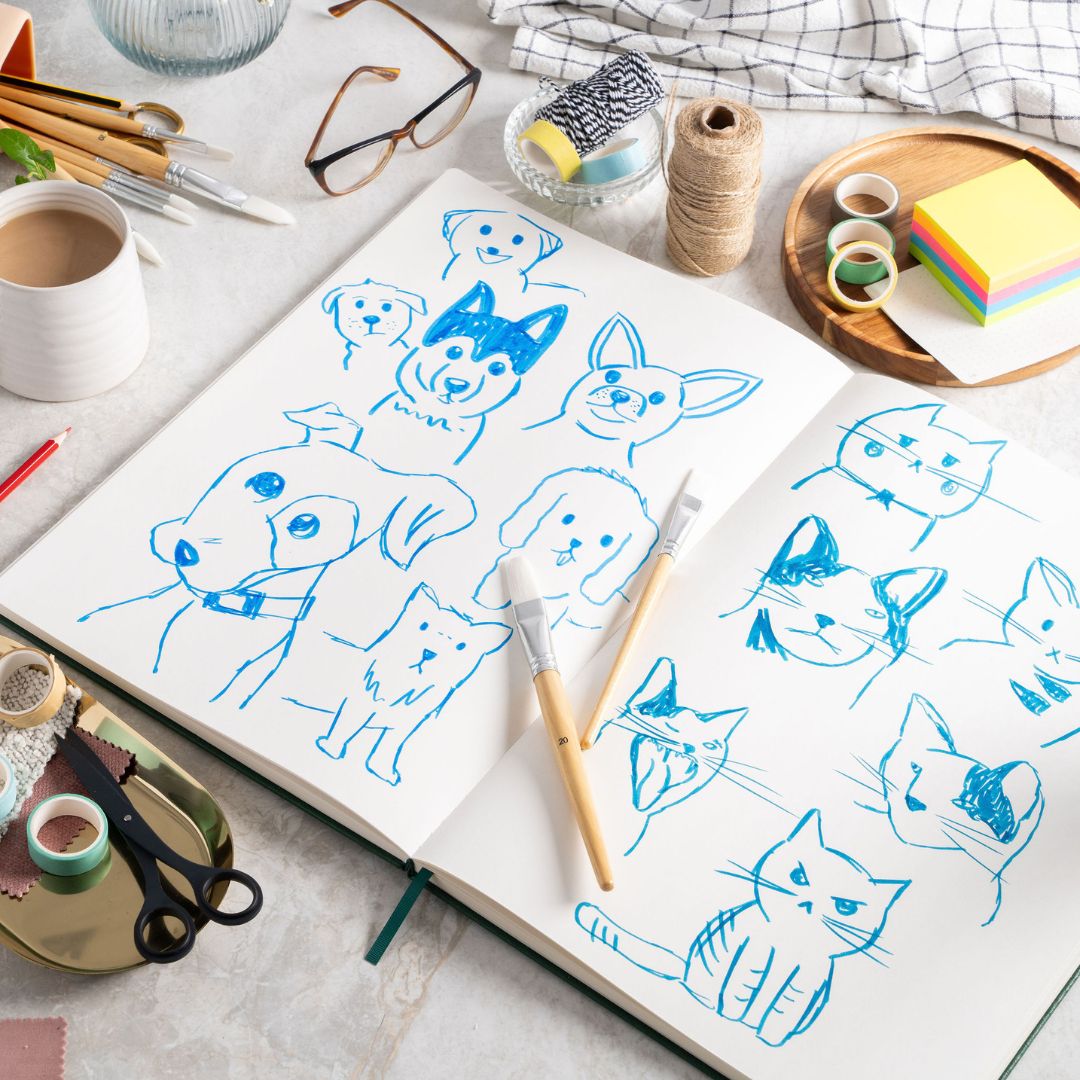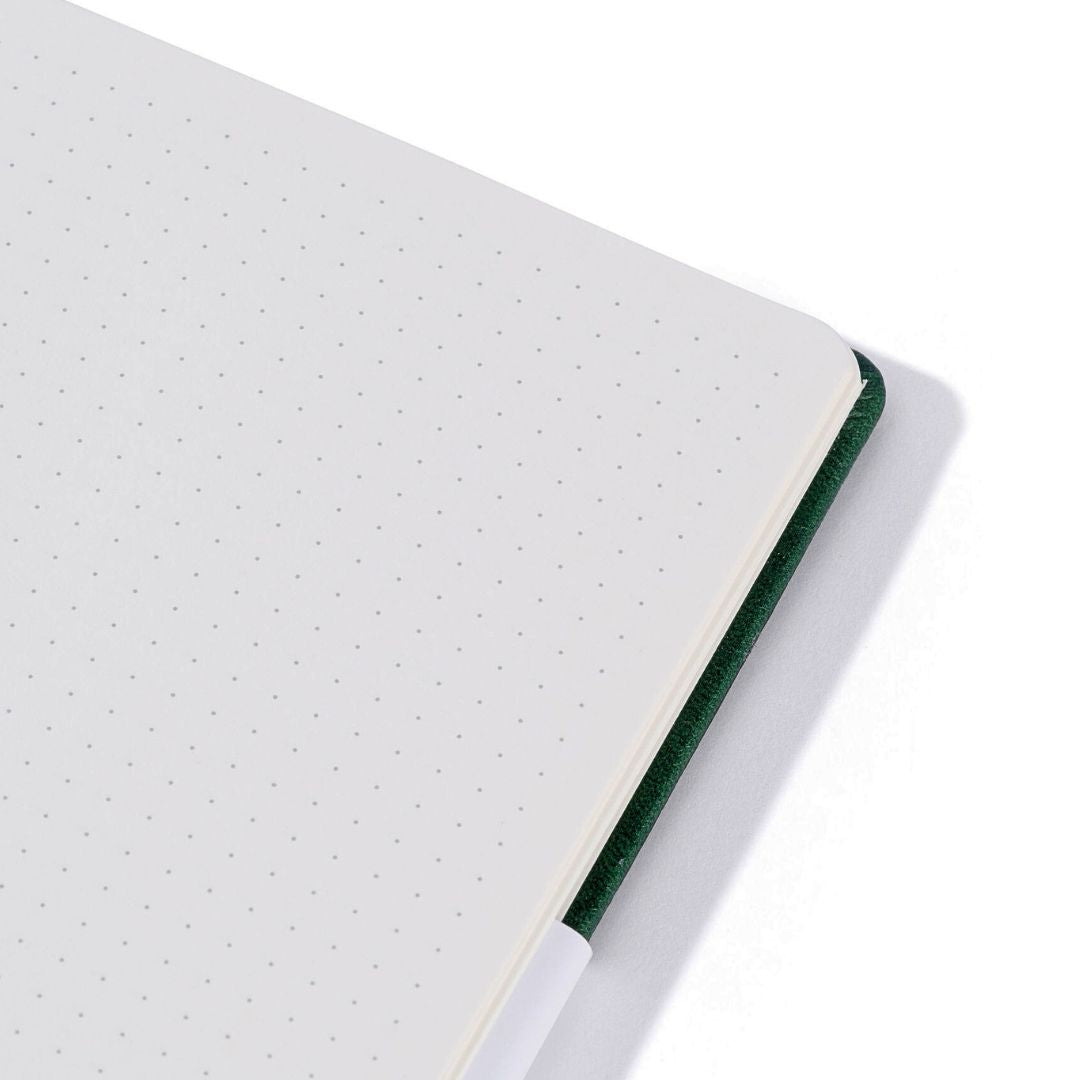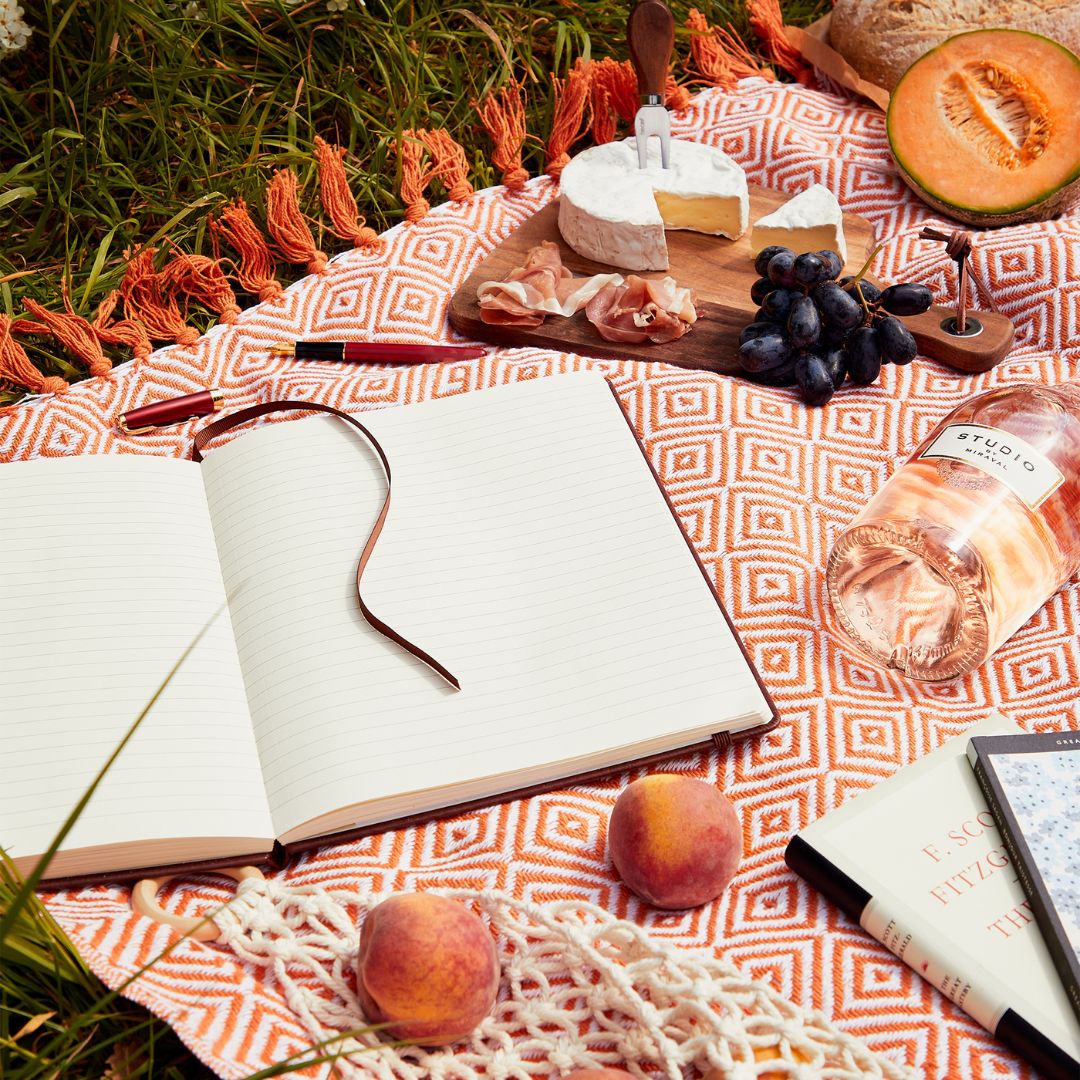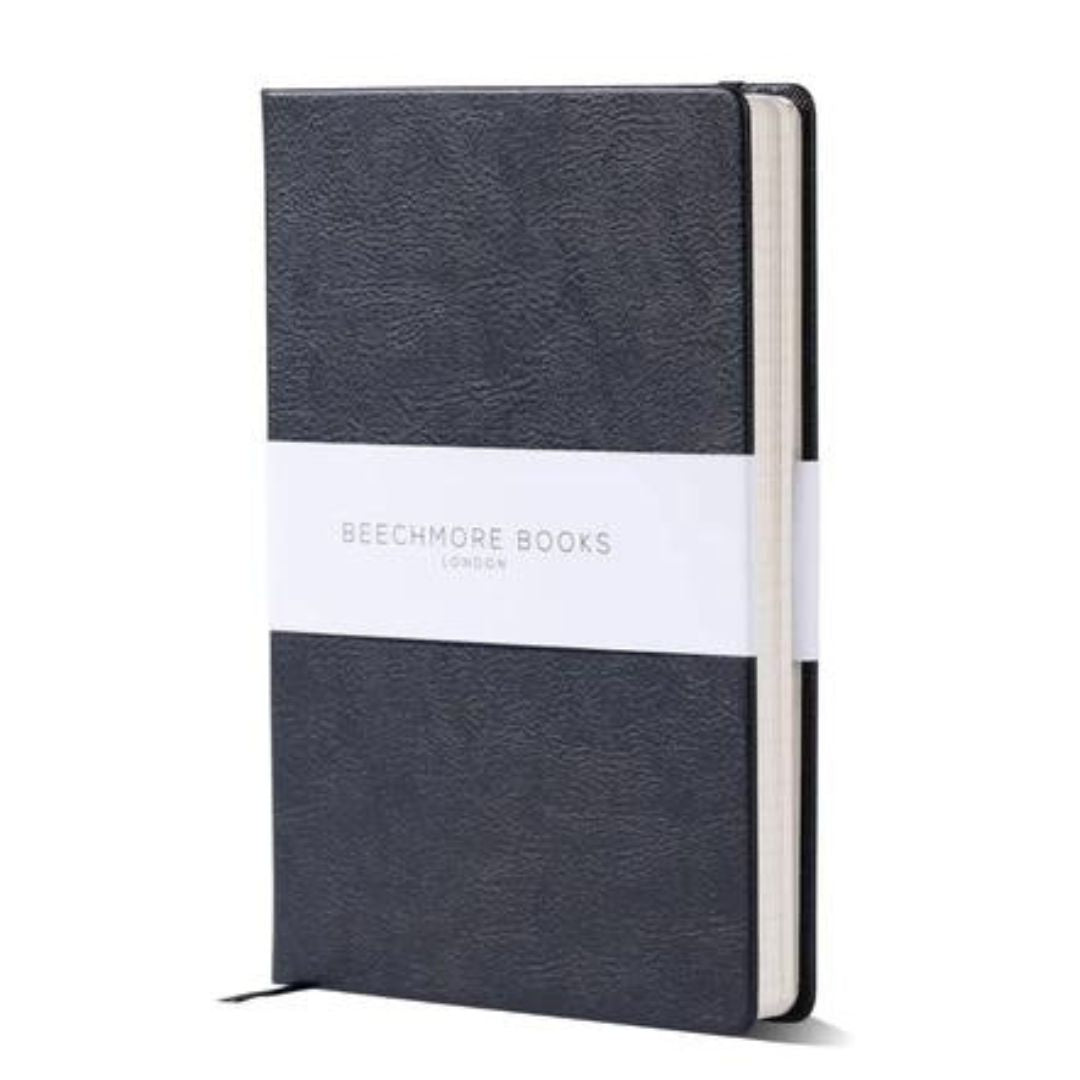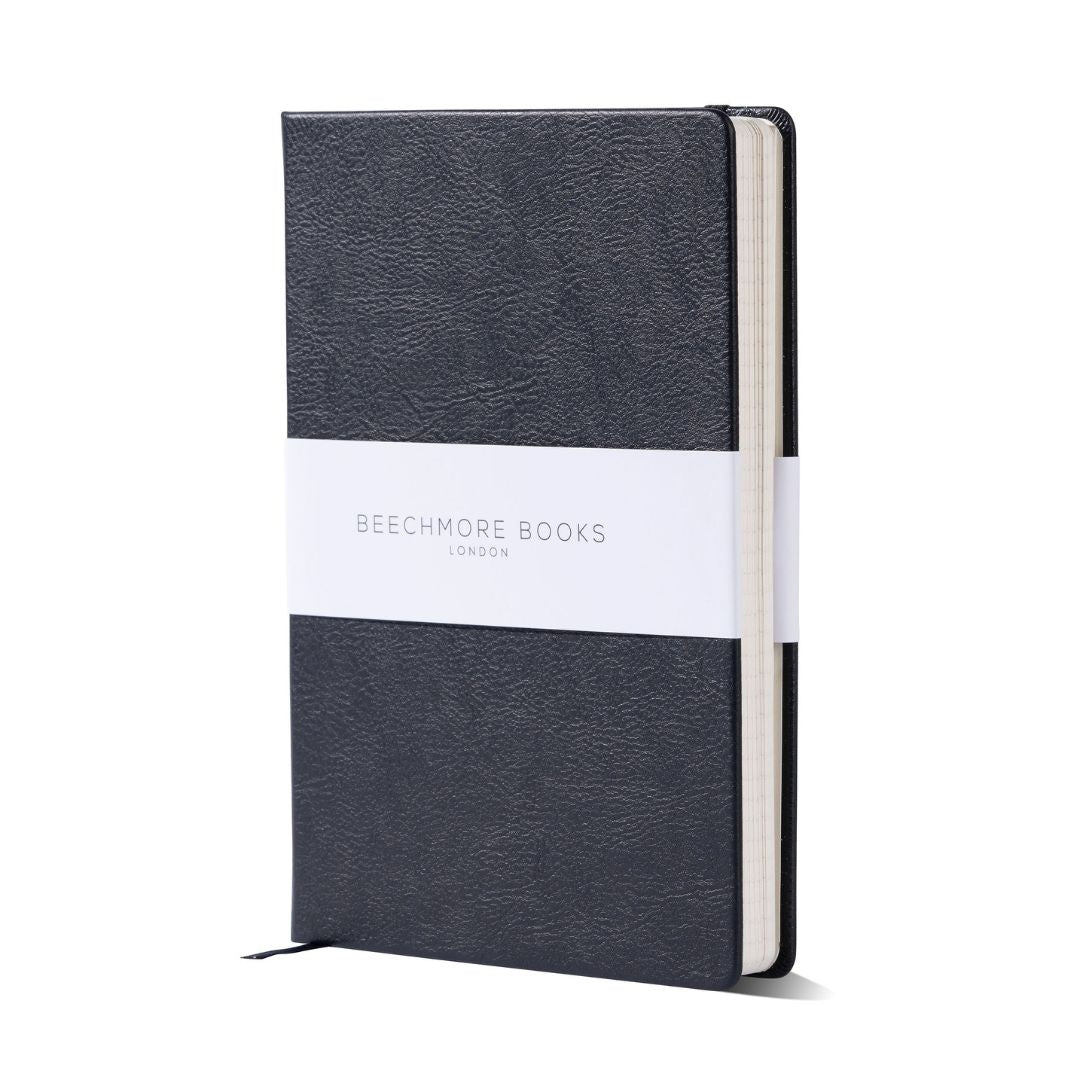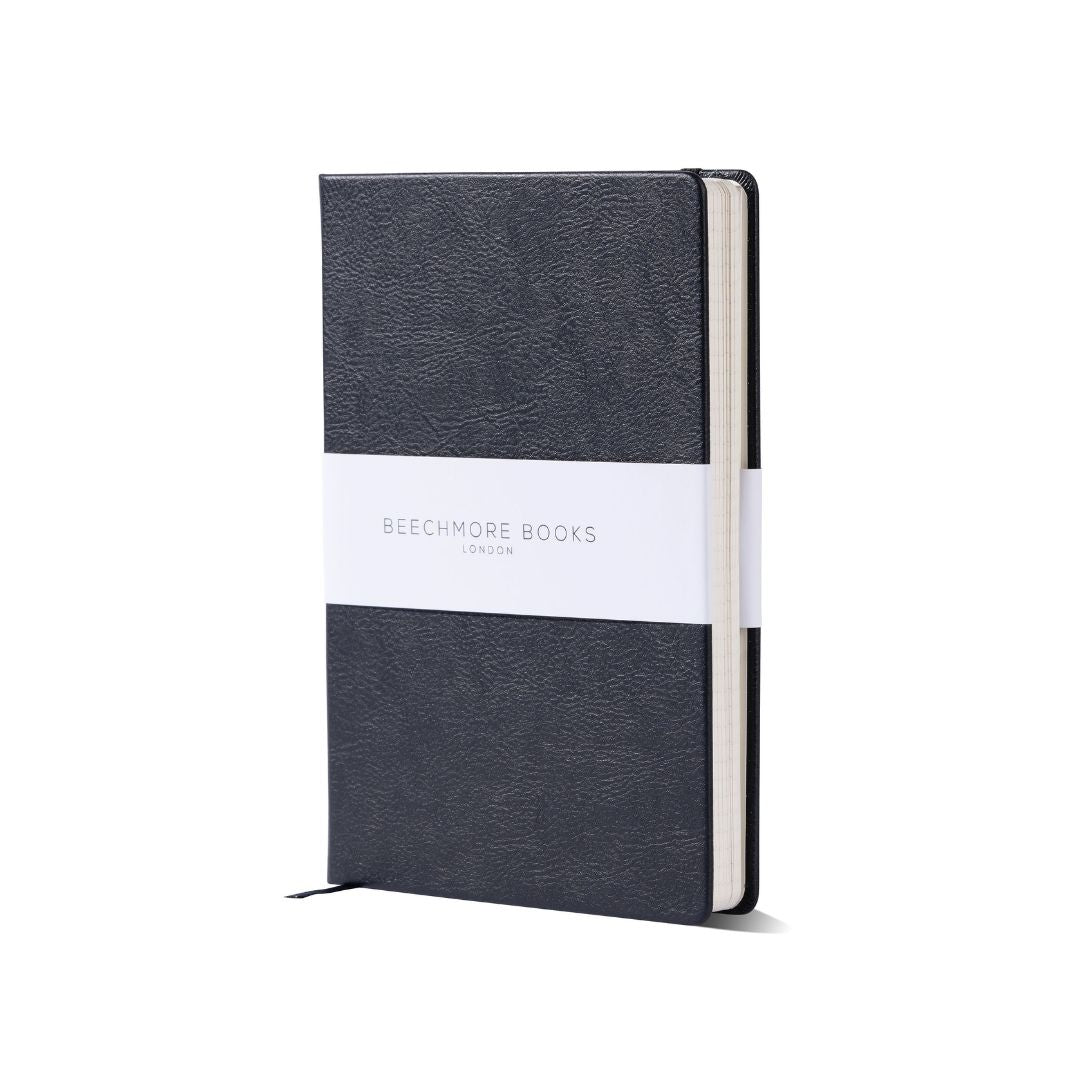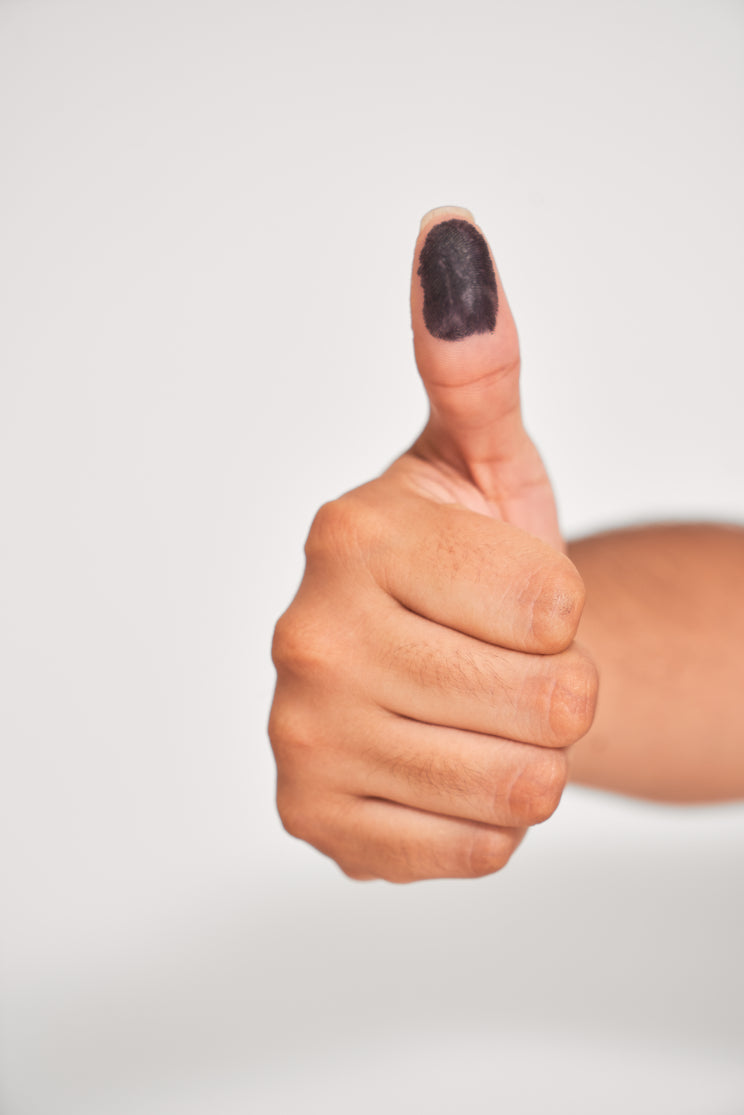You've got a sketchbook, a pencil, and a burning desire to get better at drawing. But where do you start? I've been there, staring at a blank page, feeling like my skills will never improve. But here's the thing: drawing is a skill, not a talent. With the right techniques and a lot of practice, anyone can learn to draw. And I mean anyone.
I used to think I was hopeless at drawing. But then I discovered some simple techniques that changed everything. Now, I can't stop sketching, and my skills keep growing every day. Want to know my secrets? Keep reading to discover 15 proven ways to get better at drawing, no matter your starting point.
Table Of Contents:
- Drawing Is a Skill That Can Be Developed With Practice
-
15 Drawing Exercises to Improve Your Skills
- 1. Fill a Sketchbook With Freehand Doodles
- 2. Draw Ordinary Objects Around You
- 3. Practice Drawing Perfect Circles
- 4. Create Patterns, Marks, and Symbols in a Grid
- 5. Incorporate Words and Lyrics Into Your Sketches
- 6. Fill a Journal With Letters of the Alphabet
- 7. Draw Repeating Patterns
- 8. Paint Repeating Patterns
- 9. Tackle Shapes You Find Challenging
- 10. Sketch Your Everyday Adventures
- 11. Experiment With Drawing Mandalas
- 12. Try Different Drawing Tools and Mediums
- 13. Focus on Organic Shapes Found in Nature
- Refining Your Motor Skills and Hand-Eye Coordination
- Using References and Measuring Techniques to Improve Accuracy
- Conclusion
Drawing Is a Skill That Can Be Developed With Practice
You might think that some people are just born with a natural talent for drawing. But the truth is, drawing is a skill that can be developed with practice. Just like any other skill, the more you practice, the better you'll get. And the best part? You don't need any fancy equipment or expensive classes to start learning how to draw.
All you need is a pencil, some paper, and a willingness to put in the time and effort. So if you've always wanted to learn how to draw but never thought you had the talent, think again. With a little bit of practice and patience, you'll be surprised at how quickly your drawing skills can improve.
The importance of consistent practice
Consistent practice is key when it comes to improving your drawing skills. Just like with any other skill, the more you practice, the better you'll become. Set aside some time each day to practice your drawing, even if it's just for a few minutes.
You don't need to spend hours hunched over a sketchbook to see improvement. In fact, short, focused practice sessions can be just as effective as longer ones. The important thing is to make drawing a regular part of your routine.
Making drawing a daily habit
One of the best ways to improve your drawing skills is to make it a daily habit. Set aside a specific time each day to practice, and stick to it as much as possible. It doesn't have to be a long session - even 15-20 minutes of focused practice can make a big difference over time.
Try to make your daily drawing sessions enjoyable and relaxing. Put on some music, find a comfortable spot to sit, and let yourself get lost in the process. The more you enjoy your practice sessions, the more likely you are to stick with them long-term.
Setting aside dedicated time for drawing
In addition to making drawing a daily habit, it's also important to set aside dedicated time for longer practice sessions. This is where you can really dive deep into specific techniques or work on more complex projects.
Try to schedule at least one longer drawing session per week, maybe on a weekend or during a day off. During these sessions, challenge yourself to try new things and push your skills to the next level. Remember, the more time and effort you put into your practice, the faster you'll see improvement in your drawing skills.
15 Drawing Exercises to Improve Your Skills
Now that you know the importance of consistent practice, let's dive into some specific exercises you can do to improve your drawing skills. These exercises are designed to help you build a strong foundation in the basics of drawing, such as line work, shading, and perspective.
Remember, the key to improving your skills is to practice regularly and consistently. Don't get discouraged if your drawings don't turn out perfect the first time - that's all part of the learning process. With time and practice, you'll start to see improvement in your work.
1. Fill a Sketchbook With Freehand Doodles
One of the best ways to improve your drawing skills is to simply start doodling. Grab a sketchbook and a pencil, and let your imagination run wild. Don't worry about making perfect drawings - the goal here is to get comfortable with the act of drawing itself.
Fill your sketchbook pages with all sorts of doodles, from abstract shapes and patterns to silly characters and scenes. The more you doodle, the more confident you'll become with your drawing tool of choice.
2. Draw Ordinary Objects Around You
Another great way to practice your drawing skills is to focus on the simple objects around you. Look around your room or workspace and choose an object to draw, like a coffee mug, a plant, or a piece of furniture.
Take your time and really observe the object, paying attention to its shape, texture, and details. Then, try to recreate it on paper as accurately as possible. Don't worry if it's not perfect - the goal is to train your eye to see things more clearly and translate that onto the page.
3. Practice Drawing Perfect Circles
Drawing perfect circles can be surprisingly challenging, but it's a great exercise for improving your hand-eye coordination and control. Start by drawing a small dot in the center of your paper, then try to draw a circle around it without lifting your pencil from the page.
Keep practicing until you can consistently draw near-perfect circles of various sizes. This exercise will help you develop the muscle memory and control needed for more complex drawings down the line.
4. Create Patterns, Marks, and Symbols in a Grid
Creating repeating patterns is another great way to practice your drawing skills and develop your own unique style. Start by drawing a grid on your paper, then fill each square with a different pattern, mark, or symbol.
Experiment with different line weights, shapes, and textures to create a variety of patterns. This exercise will help you develop your creativity and learn how to create cohesive, visually interesting designs.
5. Incorporate Words and Lyrics Into Your Sketches
Adding words and lyrics to your sketches can be a fun way to express yourself and add an extra layer of meaning to your drawings. Start by choosing a favorite quote, lyric, or phrase, then try to incorporate it into a sketch in a creative way.
You could draw the words themselves in an interesting font or style, or create an illustration that represents the meaning behind the words. This exercise will help you think outside the box and find new ways to combine text and imagery in your sketchbook pages.
6. Fill a Journal With Letters of the Alphabet
Practicing your lettering skills is another great way to improve your overall drawing abilities. Start by dedicating a page or two in your journal to each letter of the alphabet, then fill the pages with various styles and variations of that letter.
Experiment with different fonts, sizes, and embellishments to create unique and interesting letterforms. This exercise will help you develop better pencil control and learn how to create visually appealing typography.
7. Draw Repeating Patterns
Drawing repeating patterns is a great way to practice your precision and attention to detail. Start by choosing a simple shape or motif, like a leaf or a geometric shape, then try to draw it repeatedly in a consistent, evenly spaced pattern.
As you get more comfortable with the exercise, try creating more complex patterns with multiple shapes or motifs. This will help you develop your eye for design and learn how to create visually striking, cohesive patterns.
8. Paint Repeating Patterns
Once you've mastered drawing repeating patterns, try taking it to the next level by painting them instead. Choose a simple pattern and a limited color palette, then try to recreate the pattern using paint and a brush.
This exercise will help you develop better brush control and learn how to create clean, crisp lines and shapes with paint. It's also a great way to experiment with color and learn how to create visually harmonious designs.
9. Tackle Shapes You Find Challenging
We all have certain shapes or objects that we find particularly challenging to draw. For some people, it might be hands or faces; for others, it might be animals or buildings. Whatever your personal challenge may be, make a point to practice drawing those shapes regularly.
Start by breaking the shape down into simpler, more manageable parts, then practice drawing each part individually before putting them all together. With time and practice, you'll start to see improvement in your ability to draw those challenging shapes.
10. Sketch Your Everyday Adventures
One of the best ways to improve your drawing skills is to simply draw from life as often as possible. Carry a sketchbook with you wherever you go, and make a habit of sketching the people, places, and things you encounter throughout your day.
Don't worry about creating perfect, polished drawings - the goal is to capture the essence of the moment and practice translating what you see onto the page. Over time, you'll start to see improvement in your ability to quickly and accurately sketch the world around you.
11. Experiment With Drawing Mandalas
Drawing mandalas is a great way to practice your precision, symmetry, and attention to detail. Start by drawing a simple circular outline, then gradually build up the design by adding repeating patterns and shapes.
Experiment with different drawing techniques, like stippling or cross-hatching, to create texture and depth in your mandala designs. This exercise will help you develop your eye for detail and learn how to create intricate, visually striking designs.
12. Try Different Drawing Tools and Mediums
One of the best ways to keep your drawing practice fresh and engaging is to experiment with different tools and mediums. Don't be afraid to branch out from your usual pencil and paper - try using charcoal, pastels, or even digital drawing tools to create your art.
Each medium has its own unique properties and techniques, so experimenting with different ones can help you develop a wider range of skills and find new ways to express your creativity. Plus, it's just plain fun to play around with new art supplies.
13. Focus on Organic Shapes Found in Nature
Drawing organic shapes found in nature, like leaves, flowers, and rocks, can be a great way to practice your observation skills and learn how to translate complex forms onto the page. Start by choosing a natural object to draw, then take your time observing its unique shape, texture, and details.
Try to capture the essence of the object using a variety of drawing techniques, like shading, cross-hatching, or stippling. This exercise will help you develop your eye for detail and learn how to create more realistic, lifelike drawings.
Refining Your Motor Skills and Hand-Eye Coordination
In addition to practicing specific drawing exercises, it's also important to focus on developing your overall motor skills and hand-eye coordination. These skills are essential for creating precise, controlled lines and shapes in your drawings.
One way to improve your motor skills is to practice drawing with your whole arm, not just your wrist and fingers. This will help you create smoother, more fluid lines and give you greater control over your drawing muscles.
The role of muscle memory in drawing
Another important factor in improving your drawing skills is developing muscle memory. Just like with any other physical skill, the more you practice a particular drawing technique or movement, the more natural and automatic it will become.
This is why consistent practice is so important - the more you draw, the more your drawing muscles will become accustomed to the movements and techniques required for creating accurate, precise drawings.
Practicing fluid lines and strokes
One specific skill to focus on when improving your motor skills is creating fluid, confident lines and strokes. This means practicing drawing light lines with a smooth, continuous motion, rather than sketchy, broken lines.
A great exercise for practicing fluid lines is to draw a series of continuous, overlapping loops or curves, focusing on keeping your hand and arm relaxed and your lines smooth and even. With practice, you'll start to develop greater control and precision in your linework.
Using your whole arm for better control
As mentioned earlier, using your whole arm to draw, rather than just your wrist and fingers, can help you create smoother, more controlled lines. This is because your shoulder joint allows for a greater range of motion than your wrist joint, giving you more freedom and flexibility in your movements.
To practice drawing with your whole arm, try standing up and using a large piece of paper or canvas. Keep your elbow and wrist relatively still, and focus on moving your entire arm from the shoulder to create broad, sweeping strokes. With practice, you'll start to develop greater control and precision in your linework.
Using References and Measuring Techniques to Improve Accuracy
While it's important to practice drawing from your imagination and memory, using references and measuring techniques can be incredibly helpful for improving the accuracy and realism of your drawings.
References can include photographs, real-life objects, or even other drawings or illustrations. By studying and copying these references, you can learn how to accurately translate complex shapes, forms, and details onto the page.
The benefits of drawing from life or photo references
Drawing from life or photo references can be a great way to improve your observation skills and learn how to create more realistic, lifelike drawings. When drawing from a reference, take your time to really study the subject and observe its unique features and details.
Try to break the subject down into basic shapes and forms, then gradually build up the details and shading to create a more accurate representation. You can even use an art mannequin or other 3D reference to help you visualize the subject from different angles and perspectives.
Basic measuring techniques for proportions
Another helpful technique for improving the accuracy of your drawings is to use basic measuring techniques to ensure proper proportions. This can involve using a pencil or other tool to measure the relative sizes and distances between different parts of the subject.
For example, you might measure the length of a person's arm relative to their torso, or the distance between their eyes relative to the width of their face. By using these measuring techniques, you can create more accurate and proportional drawings, even when working from a reference.
Analyzing shapes and angles in your subject
In addition to measuring proportions, it's also important to analyze the shapes and angles present in your subject. This means looking for basic geometric shapes, like circles, triangles, and rectangles, and observing how they fit together to create the overall form of the subject.
You can also use a contour line drawing technique to help you break down complex shapes into simpler, more manageable parts. This involves drawing the outline or contour of the subject, focusing on the edges and curves that define its form. With practice, this technique can help you create more accurate and detailed drawings, even when working from a complex reference.
Improve your drawing skills with consistent practice. Set aside daily time, enjoy the process, and don't stress about perfection. Start simple: doodle freely or draw everyday objects to train your eye and hand coordination.
Conclusion
Getting better at drawing isn't about talent or luck. It's about consistent practice, a willingness to experiment, and a dash of patience. By trying these 15 techniques, you'll be amazed at how quickly your skills improve.
Remember, every artist starts somewhere. Don't compare yourself to others or get discouraged by mistakes. Embrace the journey, and enjoy the process of watching your drawings come to life.
So grab your sketchbook, sharpen your pencils, and get ready to unleash your inner artist. With these proven techniques, you'll be well on your way to creating drawings that you're proud to share with the world. Happy sketching!

